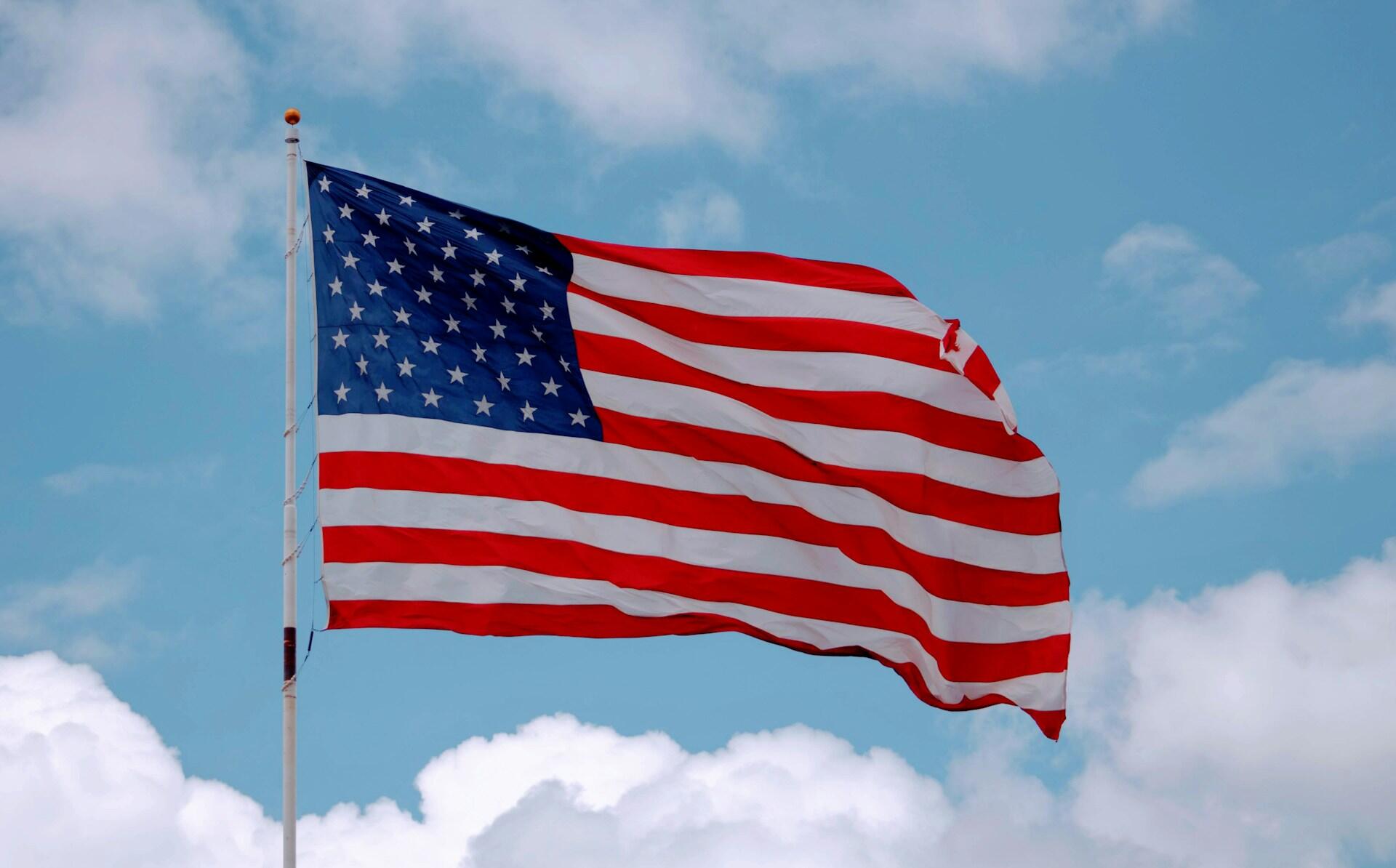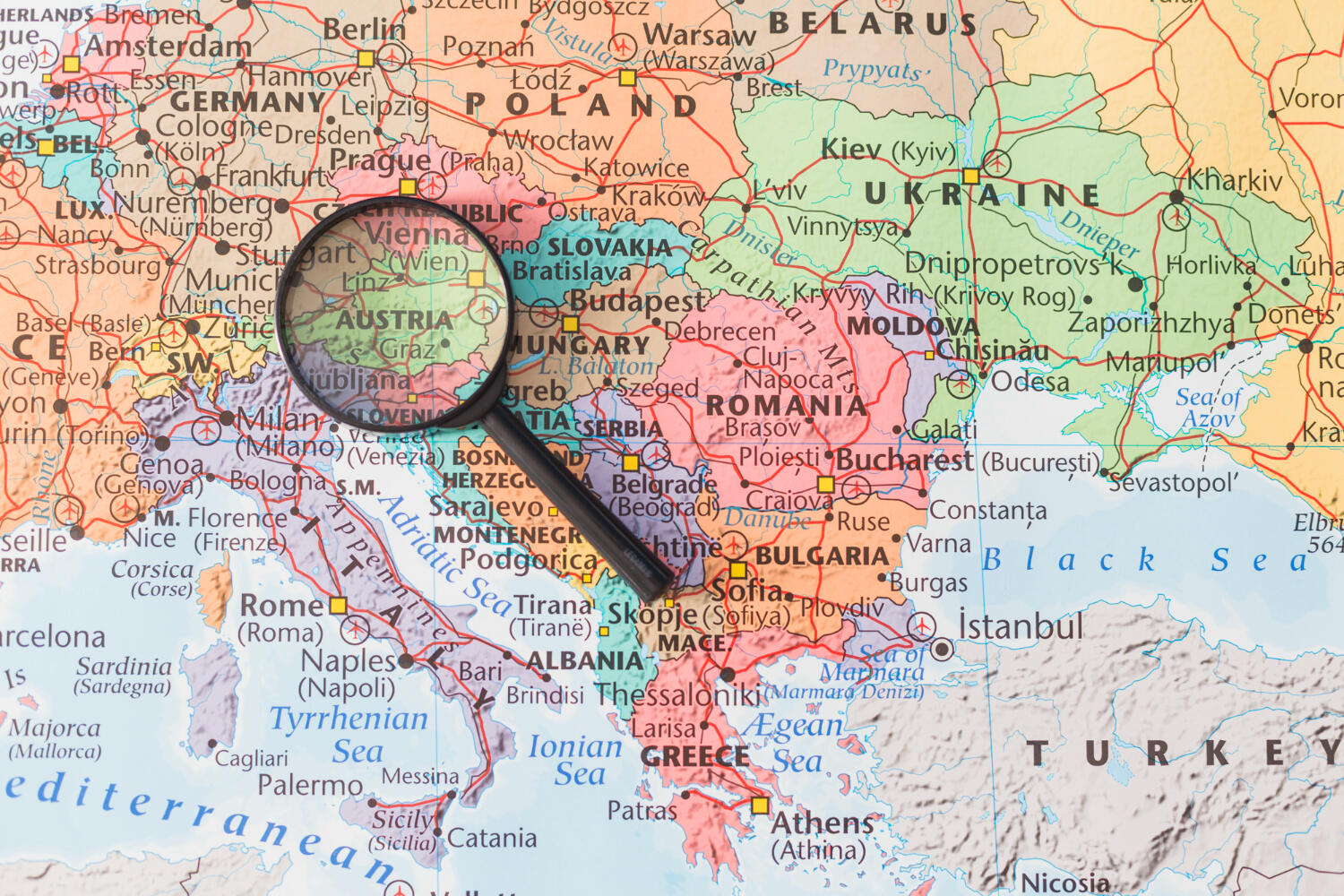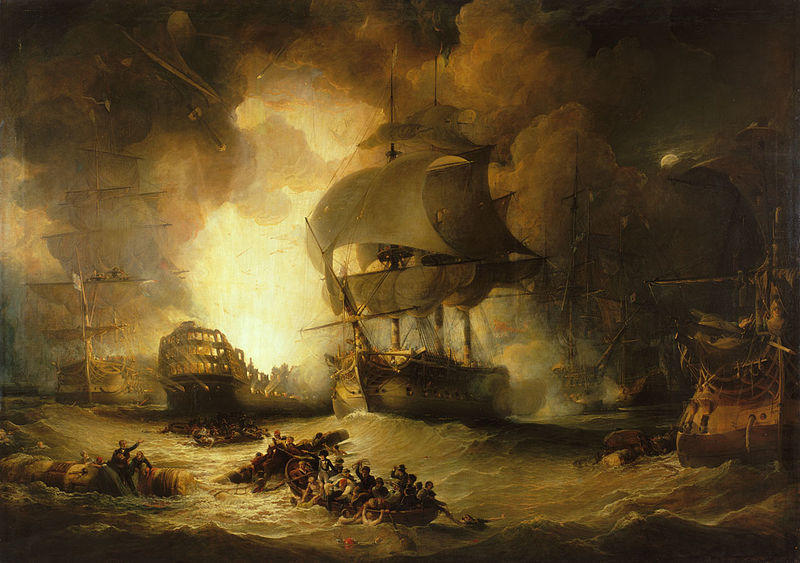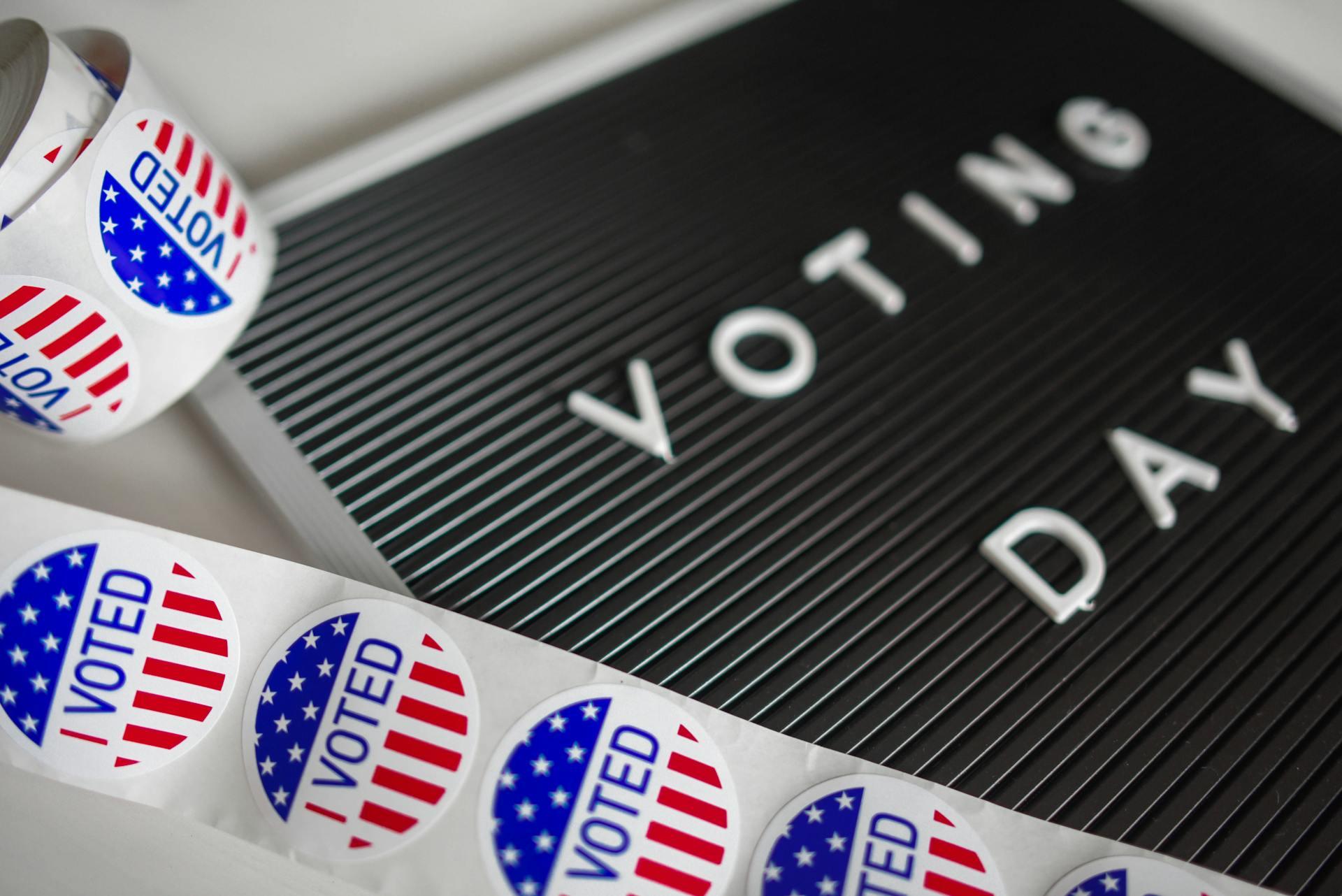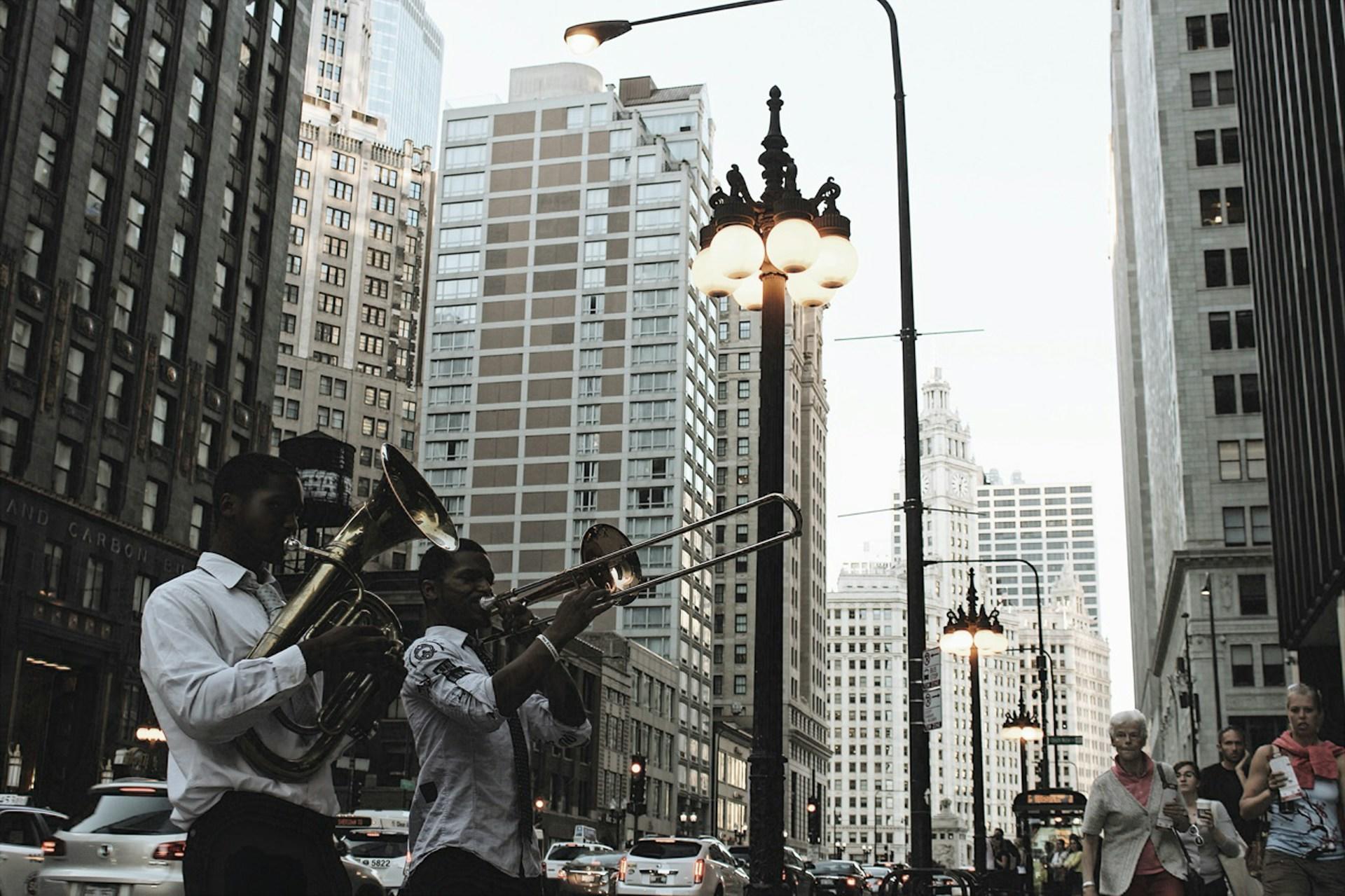When discussing pivotal moments in American history, the timeline tends to include lots of events from the early years of the country’s birth: the Revolutionary War and the signing of the Declaration of Independence in 1776, the Civil War, and Westward expansion, just to name a few. But what events in US history can still be felt in present-day American society? Find out which significant domestic events have shaped current US culture.
| Event | Year | Why It's Important |
|---|---|---|
| Automobile Craze | 1900-1960 | Fundamentally changed American infrastructure forever |
| The Civil Rights Movement | 1896-1969 | Implemented rights for Black people and set the stage for more civil rights in the future, changed how society functioned |
| Moon landing | 1969 | Exponential technological advancement and positioned US as leader in science and tech |
| 9/11 | 2001 | Changed how Americans feel existing in the US (negatively and positively), led to many changes in policies and society |
| Obama Election | 2008 | Reflection on the Civil Rights Movement, set the stage for political attitudes in following years |

The Automobile Craze
🗓️ Date
1900-1960
🇺🇸 Location
Nationwide
📌 Key Points
Changed how America approached infrastructure
When American cities were first being built, they, of course, didn’t have cars in mind (since the automobile wasn’t invented until 1886 and didn’t make its way into the US until 1893). Cities and roads were structured around horses, wagons, and pedestrians, including bicycles. Prior to 1830, inter-city and inter-state travel was typically endeavored by horse and carriage.
In 1830, the first railways began to be built, and soon there were options for both passengers and freight to be carried longer distances.

Cars very slowly gained in popularity but mostly for the wealthy and people who absolutely needed them. Public opinion of them was rather low because they were loud, smelly, unsafe, and unreliable, often breaking down or running off the road. Traffic laws were non-existent, inadequate, or not enforced. Deaths of drivers, passengers, and pedestrians in automobile accidents skyrocketed.
By far, people preferred transport by local trolley or walking for short-distance travel, and going by train for longer journeys.
All that changed with the automobile industry, lobbying, and pro-car propaganda.
By the mid-20th century, years of the auto industry lobbying the government meant that large-scale changes had been made: propaganda ensured that pedestrians were banished from roads and had to stick to the sidewalks, the “Futurama” exhibit at the 1939 World’s Fair convinced everyone that highways were the way to a progressive future, and cities were restructured to accommodate vehicles instead of alternate transport.
The first car to be sold in the US was by Alexander Winton of the Winton Motor Carriage Company in 1897. He sold about 4 cars per year in those days, and the vehicles cost $1,000 (~$38,000 in 2025).
Henry Ford’s vehicles were more affordable, making them more accessible. National City Lines, a company backed by automobile and oil interests, systematically acquired and dismantled trolley systems in many U.S. cities, making cars more desirable and even necessary.
The Interstate Highway Act of 1956 further cemented automobile dominance. Signed by President Eisenhower, it funded the construction of extensive highways at the cost of defunding the railway system and demolishing whole neighborhoods to build interstate connections.
The fundamental structure of society changed as city planning needed to revolve around vehicles instead of people. It exacerbated problems like redlining and poverty, increased US dependence on oil and gasoline, and caused a lot of pollution.
To this day, cities in the US are designed with cars in mind. Whether that’s a “good” or “bad” thing is not the point: it’s simply part of American culture that affects how we interact with our communities and the world around us.
The Civil Rights Movement
🗓️ Date
1896-1969
🇺🇸 Location
Nationwide
📌 Key Points
Led to systemic changes in the rights of Black Americans
The 19th and 20th centuries in the US were full of significant events and progress. It was a time that, due to the state of technology and society, had a lot of room for obvious change and growth. The new, widespread use of radio and TV news caused more rapid developments since people could be more informed about worldly events more quickly.
Attitudes had shifted a lot since the abolishment of slavery in 1863, and it became more and more obvious to people that human rights had to change in the States.
Civil Rights leaders were able to seize their opportunity in the small window made by these recent events and attitude shifts. In 1948, almost 100 years after the Emancipation Proclamation, a time which had been full of Jim Crow, “Black Codes,” and excessive violence against Black people, the Civil Rights Movement gained its feet with the passing of Executive Orders 9980 and 9981.
Between 1875 and 1957, no civil rights laws were enacted by the federal government.
Between 1957 and 1968, three Civil Rights Acts were passed.
Between 1954 and 1970, there was a massive change in how racial equality was seen in the US as a whole. The 50s began with Black people being arrested, beaten, and even killed for “offenses” as small as drinking from a “Whites Only” water fountain. By 1970, anti-segregation was law and American society was set to learn how to live side-by-side with people from different backgrounds.
While there was still a long way to go regarding the civil rights of Black people (and other non-whites) at that time, the progress made in only 20 years was astounding compared to the previous 300 years.
With the help of iconic figures like Rosa Parks and Martin Luther King, Jr., combined with leaders in organizations like the NAACP, the Civil Rights Movement paved the way for long-lasting change that influences how we conduct ourselves today.
The movement set in motion opportunities for other civil rights issues to be addressed and improved, such as rights for other non-whites, rights for women, and rights for disabled people.
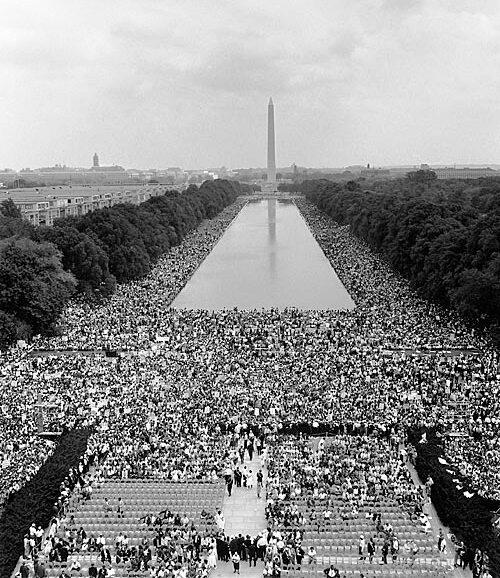
Without these successful movements, American society would look and function quite differently!
The Apollo 11 Moon Landing
🗓️ Date
1969
🌕 Location
The Moon
📌 Key Points
Asserted US dominance in technology vs USSR in the Cold War
When looking at timelines from the 20th century in the US, it’s pretty incredible to see what events were happening simultaneously!
While MLK was giving speeches and leading peaceful protests to help secure voting rights for Black people, scientists and engineers in the same country were inventing ways to blast off into space.
At the height of the Cold War between the US and the Soviet Union, the two countries were “fighting” by trying to outdo one another in terms of flexing their technological mastery. The USSR launched the first satellite, Sputnik, in 1957, inciting the US to begin developing its space programs.
Up to that point, there hadn’t been much progress in creating satellites or developing rockets in the US; it was incredibly expensive and there were other, more pressing issues at hand. But, when it became a challenge of resources and progress, the United States simply could not let the Soviets win.
As a result, in only one year, the US also launched its first satellite. The year after that (1959), the US was training its first batch of astronauts to go into space. Over the next decade, the USSR and the US competed in the Space Race, each making strides towards sending humans to space, each trying to be the first to make a new record.
The Soviet Union managed to get the first man to orbit, but the US was close behind, sending the first American less than a year later.
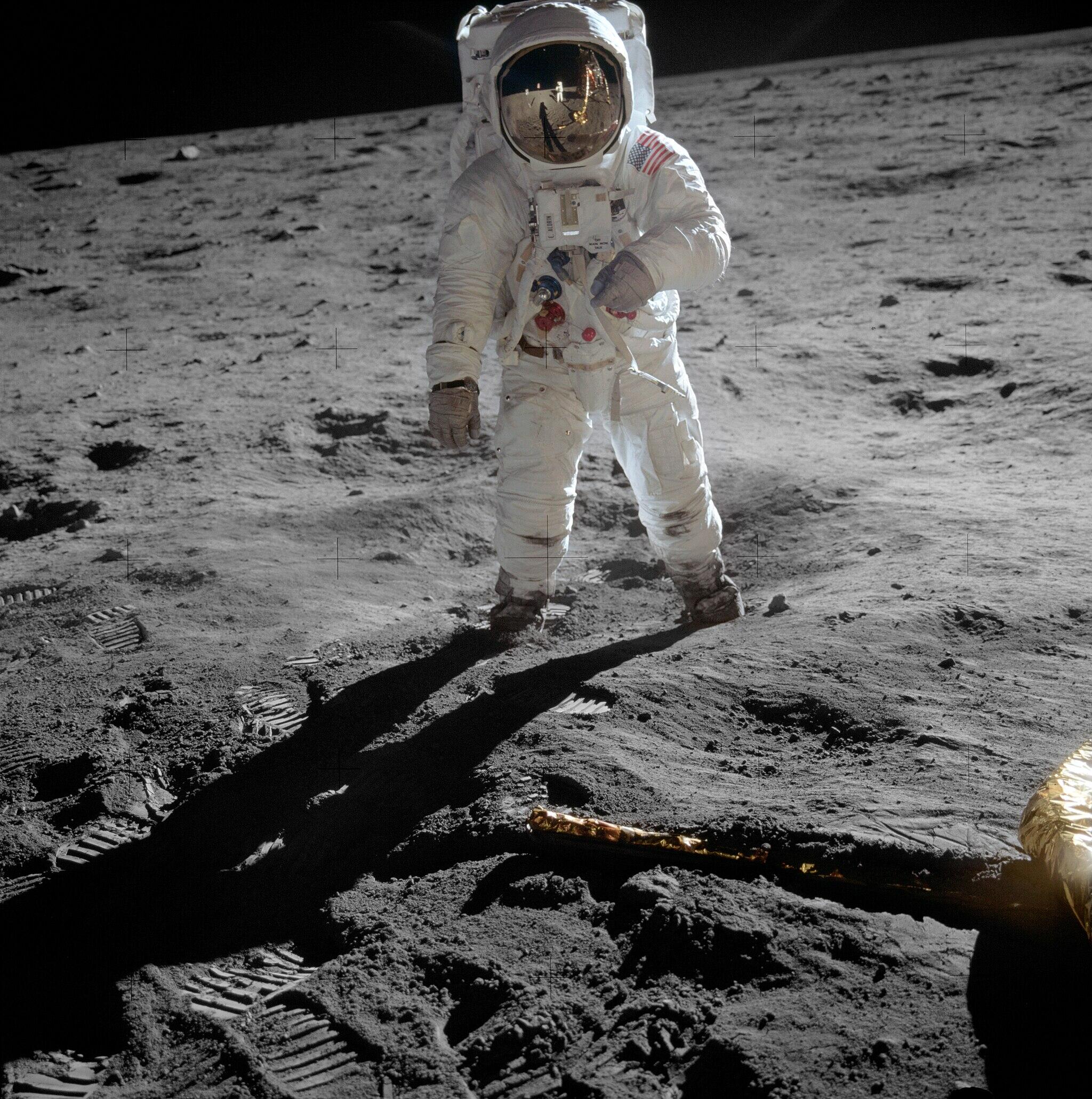
Again, the USSR managed to hit the milestone first and sent their cosmonauts on a spacewalk in 1965, but that same year the US managed to do the same.
The race, which had been neck and neck, ended when the US pulled ahead and managed to send the Apollo 11 spacecraft to the moon in 1969. Neil Armstrong and Buzz Aldrin were the first people to ever walk on the moon.
While it’s true that the frantic pace at which space technology was being developed at that time slowed way down in the years following, it’s been picking back up as of late. The data gathered from those missions, plus the many unmanned missions before and since then, have all contributed to the development of space travel tech today.
Furthermore, when the landing happened, the US positioned itself as the nation with the best and brightest scientists, which boosted Americans’ morale and patriotism while intimidating other countries. This attitude is an important part of American culture.
Apollo 11 wasn't the only spacecraft to reach the moon! In total, 9 missions have landed on the moon, and 24 astronauts have been to the moon (all Americans). 12 people have walked on the lunar surface. The final mission was Apollo 17 in 1972.

9/11
🗓️ Date
2001
🇺🇸 Location
New York City; Arlington, VA; field in Pennsylvania
📌 Key Points
Affected the American psyche and led to extreme policy changes domestically and abroad
For all Americans who were old enough to understand what was happening that day, September 11th, 2001 is a day that will echo in the back of their minds for the rest of their lives. At the time, the average American wasn’t too involved with politics, especially international relations, so the terrorist attack completely blindsided millions of people.
That morning, 19 terrorists who were members of an Islamist extremist group headquartered in Afghanistan, al-Qaeda, hijacked 4 commercial airplanes. Two of the planes were rerouted to New York City, where they crashed into the Twin Towers, which were the two tallest buildings in the city and symbols of the US’s economic power.
The Twin Towers were part of the World Trade Center (WTC), a complex made of 7 buildings connected by an underground concourse. They were office buildings for several tenants, such as Port Authority of New York and New Jersey, Bank of America, and Empire Blue Cross and Blue Shield.
The third plane was intentionally crashed into the Pentagon. The fourth plane, which may have been on its way to hit the White House or the Capitol, crashed in a field in Pennsylvania when the passengers and crew fought back and foiled the terrorists’ plans. Tragically, in all 4 crashes, there were no survivors.
Fortunately, most of the people in the Twin Towers and the Pentagon escaped, although there were heavy casualties. In NYC in particular, the death toll rose because many rescue crew members lost their lives while trying to help people escape the crumbling towers.
The immediate fallout of the situation was a national emergency, with all planes ordered to land. Any that were left in the sky were to be shot down by the military. By that time, however, all 4 planes had already crashed and there were no others.
In the following months, the government worked to both secure internal safety, which is how the Department of Homeland Security came about, and fight against al-Qaeda, which is how the War on Terror in Afghanistan started.

Many moves, such as the Patriot Act and the war, were criticized. Others, like increased security at airports and the implementation of the TSA, were seen as good protective measures.
Americans across the world all felt a collective, confusing mix of grief, anger, and a sense of national pride. For the first time in a long time, many Americans put aside their differences and felt a renewed sense of unity; it was a beautiful time to be an American as the people were determined to rise above the fear together.
On the flip side of the coin, 9/11 also caused a lingering sense of fear in the back of the American psyche.
Obama Election
🗓️ Date
2008
🇺🇸 Location
Nationwide
📌 Key Points
Demonstrated changes in Americans' attitude toward Black people since the Civil Rights Movement, signified a new era in US politics
The election of Barack Obama as the 44th President of the United States was a historic moment, perhaps one of the most important events in US history. There are several reasons for this:
- Obama was the first non-white person to be elected President
- His election invoked reflection about the Civil Rights Movement and how society had changed since 1970
- The US’s image abroad was immensely elevated
Obama’s campaign themes of “hope” and “change” were widely welcomed by most Americans.
At that point, the US had been struggling domestically and abroad because of President George W. Bush’s policies. Remember, this was not long after 9/11, so many of Bush’s actions were looked upon unfavorably, like getting the US involved in a war in Iraq.
Electoral votes
vs 45.7% for McCain
Obama, as a Democrat, also had the advantage in the election because his opponent, John McCain, was a Republican like the sitting President Bush, who had an abysmal approval rating of only 37%.
Obama’s election showed that the American public wanted to believe in a different way of running things. Black voters turned out in numbers never seen before, encouraged by having the choice to select someone from their community for the first time. People from many other communities also felt empowered to start getting more involved in local politics.
Citizens of other countries celebrated because Obama’s election signified a maturity in the US that was needed; having elected a fresh face with a fresh message gave hope to the world that America would start heading in a new direction (i.e. not starting a war).
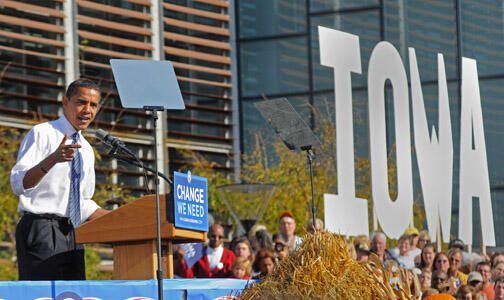
However, in the nearly 29 years since then, many people think that his election may have actually divided the country in the long term.
While Obama gave many a glimmer of hope, for other Americans, his presence in the Oval Office was not well-received.
Many of the themes surrounding attitudes about Obama’s election were direct reflections of attitudes seen in the Civil Rights Movement. It showed in what ways America had changed and in what ways it had stayed the same since the days of MLK.
His election shined a light on different aspects of society that hadn’t been addressed. In the years since his election, many people still feel strongly one way or another about the whole event, perhaps contributing to the American Divide we are still feeling today.
Keep Learning About History with Superprof
There have been many other important events in American history, but to list them all would take far more time than we have here!
If you want to learn more about US history or world history, you can find an expert, qualified private tutor on Superprof to help you study what you need and want to know.
Whether you’re in school or college and need to brush up on your history skills for class or you’re just learning for fun, learning with a tutor can help you guarantee that you absorb the information quickly and effectively.
Easily find a tutor on Superprof for in-person or online classes today!
References
- America’s Great Divide. (n.d.). In FRONTLINE. https://www.pbs.org/wgbh/frontline/documentary/americas-great-divide-from-obama-to-trump/transcript/?
- Apollo 11 Mission Overview - NASA. (2015). https://www.nasa.gov/missions/apollo-11-mission-overview
- Civil Rights Movement: Timeline, Key Events & Leaders. (2024). In HISTORY. https://www.history.com/topics/black-history/civil-rights-movement
- Deane, C. (2016). Americans Name the 10 Most Significant Historic Events of Their Lifetimes. In Pew Research Center. https://www.pewresearch.org/politics/2016/12/15/americans-name-the-10-most-significant-historic-events-of-their-lifetimes
- Dimock, M. (2017). How America Changed During Barack Obama’s Presidency. In Pew Research Center. https://www.pewresearch.org/social-trends/2017/01/10/how-america-changed-during-barack-obamas-presidency
- Platis, S. (2022). American Cities Actually Weren’t Built for the Car. In Medium. https://s-platis.medium.com/american-cities-actually-werent-built-for-the-car-f4699d76454c
- September 11 attacks. (2025). In Britannica. https://www.britannica.com/event/September-11-attacks
- U.S. History Primary Source Timeline. (n.d.). In Library of Congress. https://www.loc.gov/classroom-materials/united-states-history-primary-source-timeline
- Why did cars become the dominant form of transportation in the United States? (2008). In HowStuffWorks. https://auto.howstuffworks.com/cars-dominant-form-transportation.htm
- Why Was the Election of 2008 Important? (2018). In HISTORY. https://www.history.com/topics/us-presidents/why-was-the-election-of-2008-important-video
- Winton, A. (2017). Get A Horse! America’s Skepticism Toward the First Automobiles. In The Saturday Evening Post. https://www.saturdayeveningpost.com/2017/01/get-horse-americas-skepticism-toward-first-automobiles

